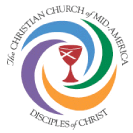Thinking about preparing your church for a disaster can be overwhelming. How can leaders begin such a big task with so many variables and unknowns?
The best way to begin is simply to begin! Every step you take toward preparedness, even small steps, will help protect people and assets and–most importantly–better enable your community to help others after a disaster or emergency event. Here are ten simple ways for your congregation to become more prepared:
Post the church address, phone number, and emergency contacts by every phone, fire alarm, defibrillator, and first aid kit at the church.
Sign up for local emergency alert systems, and keep a battery or crank weather radio at the church.
Create evacuation and shelter-in-place signs and have evacuation and shelter-in-place drills.
Locate the emergency shutoff valves for gas and water and the main electrical breakers for your church buildings. Make sure multiple leaders know these locations.
Put flashlights in main rooms and by emergency shut offs. Check the batteries regularly.
Back up important church documents–with hard and digital copies–and store in safe locations both on- and off-site.
Update the church’s insurance information.
Introduce church leaders to city and county emergency officials.
Update the church directory, including emergency contact information and notes about members who would need assistance in an evacuation, prolonged power outage, or other emergency situation.
Stock water and non-perishable food in case people need to shelter at the church.
Finished with those steps? Check out the congregational disaster preparedness guide available from Week of Compassion and Disciples Volunteering, or consider hosting a Week of Compassion and Disciples Volunteering disaster preparedness training for your congregation or Region.

